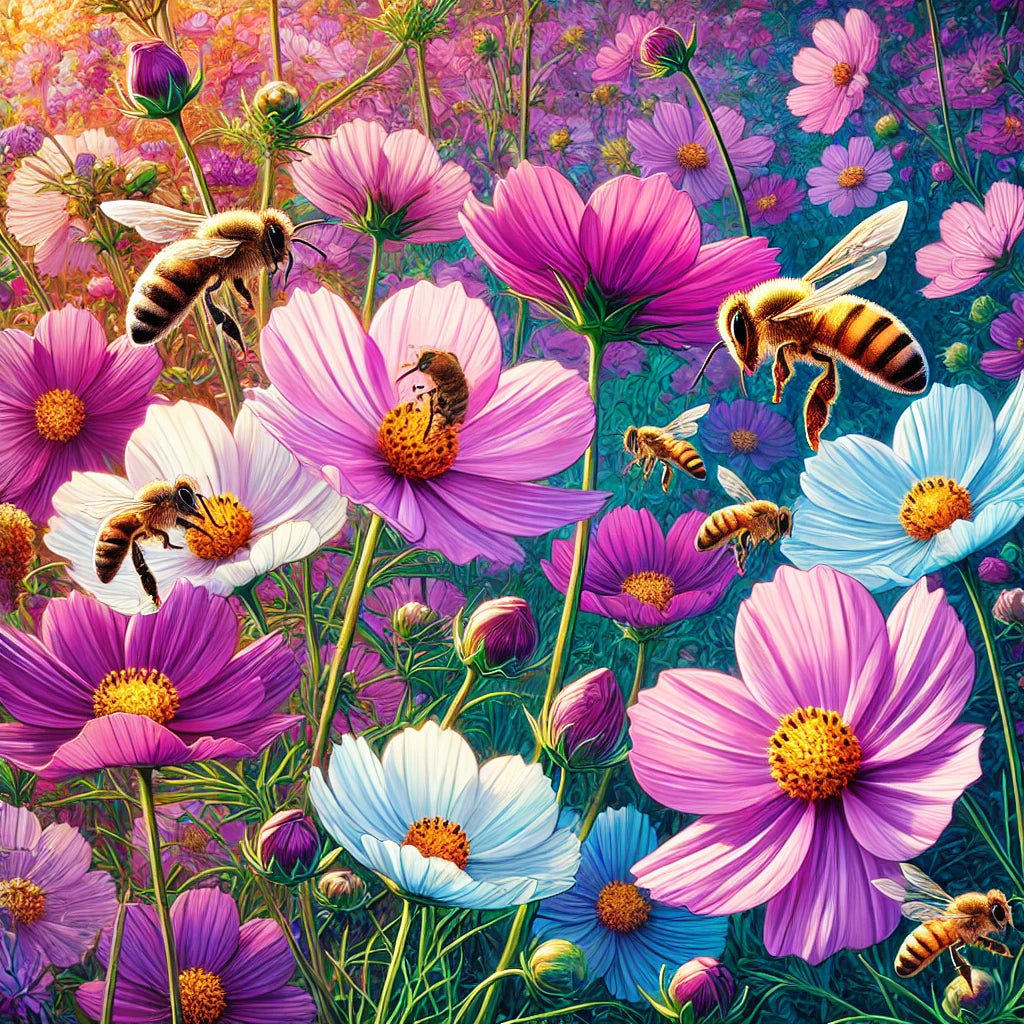If you're looking for a low-maintenance, vibrant addition to your garden that also supports pollinators, look no further than the cosmos leaf. This delicate, feathery plant not only adds aesthetic appeal to any garden, but its bright flowers are also a favorite among bees.
In this article, we’ll explore why cosmos is one of the best flowers for bees, its benefits, and how to grow it successfully in your garden.
Why Cosmos is Great for Bees
Cosmos flowers offer bees a double benefit: they provide both nectar and pollen. This makes them a valuable food source, especially in gardens where bees might struggle to find consistent nourishment.
Cosmos bipinnatus (also known as Mexican Aster) has been shown to produce significant amounts of nectar and pollen, helping bees fuel their day-to-day activities while boosting overall garden pollination.
The extended blooming period of cosmos—lasting from summer through late fall—means bees have access to food even when other plants have stopped flowering.
How Cosmos Supports the Life Cycle of Bees
The life cycle of bees involves stages that require both nectar for energy and pollen for feeding larvae. Cosmos flowers are particularly good at providing both, making them a critical resource for supporting bee colonies throughout their lifecycle. By planting cosmos, you're creating a haven where bees can thrive, collect food, and help pollinate your garden's other plants.
How to Grow Cosmos for Pollination Success
Cosmos is easy to grow, making it perfect for beginner gardeners. Plant cosmos seeds in well-draining soil, ideally in a spot with full sun. They are tolerant of poor soil, but avoid over-fertilizing, as this can reduce flower production. Cosmos is also self-seeding, meaning it will come back year after year, providing ongoing support for your bee population.
As cosmos grows tall, it can fill bare spaces in your garden, creating both beauty and functionality by attracting bees and other pollinators.
The Benefits of Bees in Your Garden
Planting cosmos and other bee-friendly plants boosts your garden's biodiversity. Bees are essential for pollinating fruit, vegetable, and flower plants, leading to increased yields and healthier plants. The benefits of bees go beyond your garden’s borders, too, as they contribute to a thriving ecosystem by supporting wildflowers and food crops.
Adding Cosmos to a Bee Garden
For those looking to expand their bee gardens, cosmos should be at the top of the list. Bees are drawn to its nectar-filled, pinwheel-shaped blooms, which makes them one of the best flowers for bees in urban and rural settings alike. Cosmos can also complement other pollinator plants, like sunflowers and lavender, to ensure a steady food supply for bees throughout the growing season.
Equip Your Garden for Pollinators with Swarm Commander
Adding cosmos to your garden is a simple yet effective way to attract bees and boost pollination. The cosmos leaf offers food for bees and beauty for your garden, making it a win-win for any gardener looking to support the environment.
To further enhance your bee-friendly garden, check out Swarm Commander. They offer essential tools like bee trap attractants and guides on bee hive relocation. Visit Swarm Commander to learn how to create a thriving habitat for bees.
Frequently Asked Questions About Cosmos Flowers
Q1. Why are cosmos flowers good for bees?
Cosmos flowers provide both nectar and pollen, making them an essential food source for bees throughout the growing season.
Q2. How can I plant cosmos to attract bees?
Plant cosmos seeds in well-draining soil, preferably in a sunny spot. Avoid over-fertilizing to encourage more blooms.
Q3. How long do cosmos flowers bloom?
Cosmos flowers bloom from early summer through late fall, providing a long-lasting food source for bees...
Q4. Can cosmos reseed themselves?
Yes, cosmos is self-seeding, meaning it will naturally return year after year, creating a sustainable environment for bees.
Q5. How do cosmos flowers benefit the life cycle of bees?
Cosmos provides nectar and pollen, crucial for feeding adult bees and their larvae, making them a vital part of the bee life cycle.



